Research
 The 2020 program attracted 109 proposals, which were evaluated by 42 faculty volunteers. CEAS winners this year include Bielefeldt, Ding and Peleg and many more.
The 2020 program attracted 109 proposals, which were evaluated by 42 faculty volunteers. CEAS winners this year include Bielefeldt, Ding and Peleg and many more. Larremore and several colleagues from Colorado joined a nationwide study that seeks to use social media data to better understand how coronavirus cases might grow and travel in the coming weeks.
Larremore and several colleagues from Colorado joined a nationwide study that seeks to use social media data to better understand how coronavirus cases might grow and travel in the coming weeks.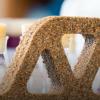 If humanity had a blank landscape, how would people build things? Assistant Professor Wil Srubar explains the benefits and potential of engineered living materials in The Conversation.
If humanity had a blank landscape, how would people build things? Assistant Professor Wil Srubar explains the benefits and potential of engineered living materials in The Conversation.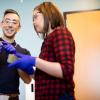 Wil Srubar, an assistant professor in civil, environmental and architectural engineering and CU Boulder’s Materials Science and Engineering Program, has won a National Science Foundation CAREER Award – one of the most prestigious awards for young faculty.
Wil Srubar, an assistant professor in civil, environmental and architectural engineering and CU Boulder’s Materials Science and Engineering Program, has won a National Science Foundation CAREER Award – one of the most prestigious awards for young faculty.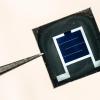 Researchers from CU Boulder have created a low-cost solar cell with one of the highest power-conversion efficiencies to date, by layering cells and using a unique combination of elements.
Researchers from CU Boulder have created a low-cost solar cell with one of the highest power-conversion efficiencies to date, by layering cells and using a unique combination of elements. On Super Tuesday, Democratic voters from Colorado and across the United States will face a serious decision: Sanders or Warren? Biden or Bloomberg? Then, afterward, what kind of wine to drink?Now, a new study taps into mathematics to probe how
On Super Tuesday, Democratic voters from Colorado and across the United States will face a serious decision: Sanders or Warren? Biden or Bloomberg? Then, afterward, what kind of wine to drink?Now, a new study taps into mathematics to probe how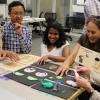 The Build a Better Book project, which started in Assistant Professor Tom Yeh's computer science lab, takes a different approach to science, technology, engineering and math (STEM) education.
The Build a Better Book project, which started in Assistant Professor Tom Yeh's computer science lab, takes a different approach to science, technology, engineering and math (STEM) education. Unsafe drinking water and household air pollution are major causes of illness and death around the world Associate Professor Evan Thomas writes in The Conversation.
Unsafe drinking water and household air pollution are major causes of illness and death around the world Associate Professor Evan Thomas writes in The Conversation.
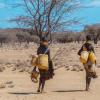 A CU Boulder and Millennium Water Alliance-led program committed to ending humanitarian drought emergencies in the Horn of Africa has been named one of the Top 100 in the prestigious John D. and Catherine T. MacArthur Foundation 100&Change competition, and remains in the running for the competition’s award of a single $100 million grant.
A CU Boulder and Millennium Water Alliance-led program committed to ending humanitarian drought emergencies in the Horn of Africa has been named one of the Top 100 in the prestigious John D. and Catherine T. MacArthur Foundation 100&Change competition, and remains in the running for the competition’s award of a single $100 million grant. Research leadership in the college is encouraging any and all faculty – no matter their rank, department or research area ¬– to submit a proposal for a new Interdisciplinary Research Theme to start this summer. Find out how.
Research leadership in the college is encouraging any and all faculty – no matter their rank, department or research area ¬– to submit a proposal for a new Interdisciplinary Research Theme to start this summer. Find out how.

